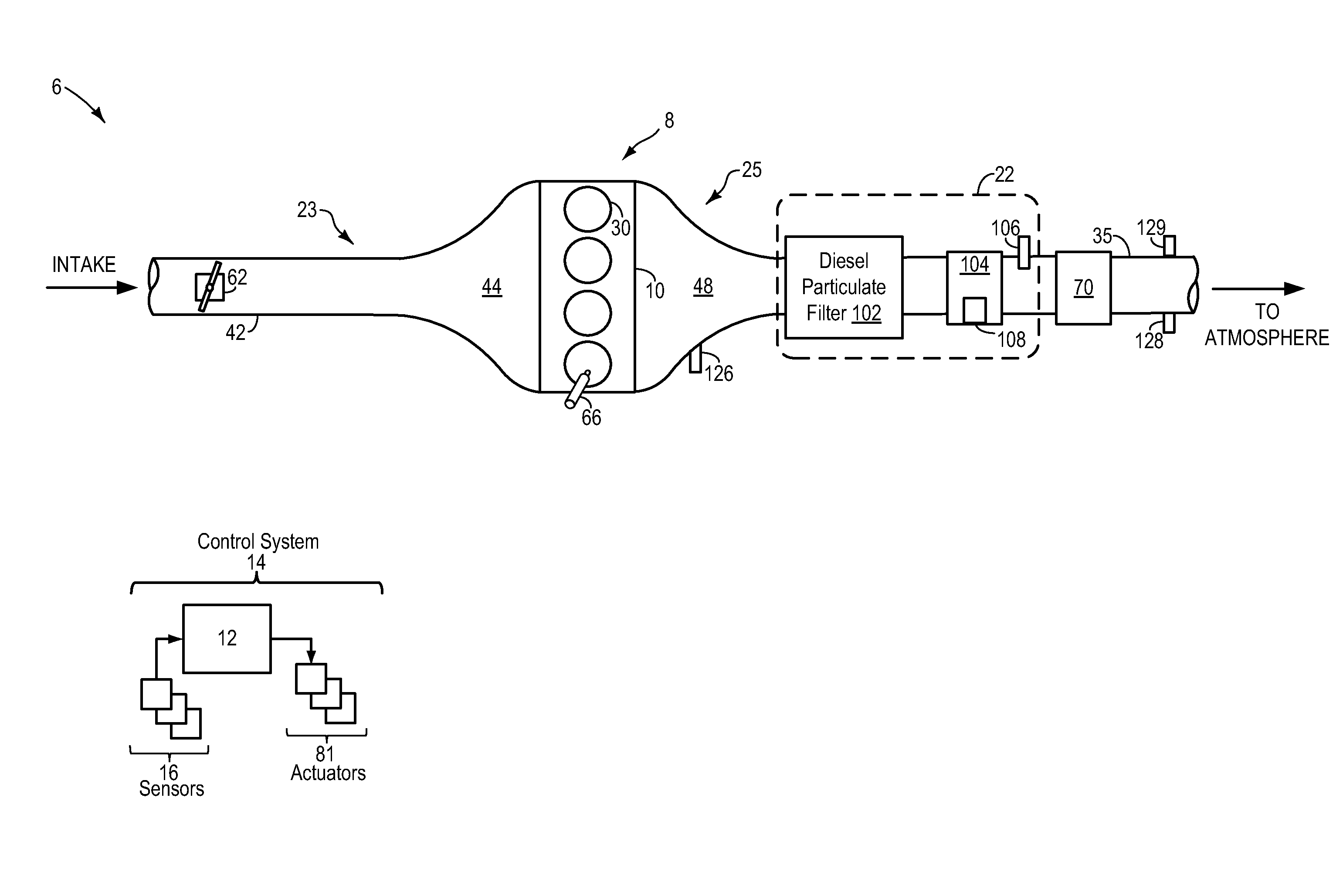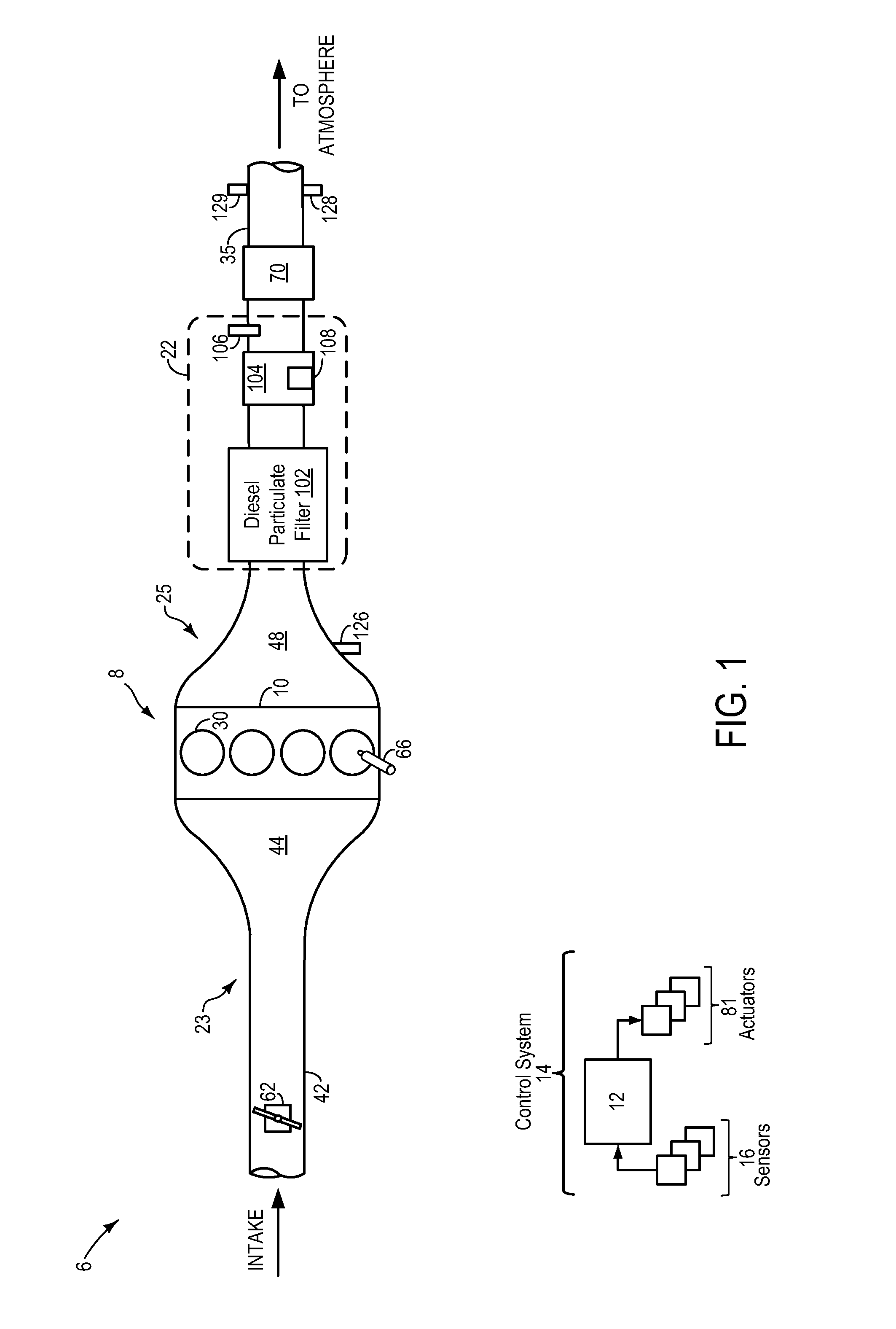Diesel particulate filter control
a technology of particulate filter and diesel, which is applied in the direction of electrical control, machines/engines, mechanical equipment, etc., can solve the problems of reducing the ability of the engine control system to differentiate, reducing the sensitivity of the electrical sensor to a degraded dpf, and reducing the ability to distinguish between a degraded dpf and a marginal dpf. , to achieve the effect of reducing the amount of particulate matter emissions, reducing
- Summary
- Abstract
- Description
- Claims
- Application Information
AI Technical Summary
Benefits of technology
Problems solved by technology
Method used
Image
Examples
Embodiment Construction
[0014]The following description relates to systems and methods for controlling a particulate matter retaining system, such as the diesel particulate matter (PM) retaining system of FIG. 1. As shown therein, the PM retaining system may include a diesel particulate filter, a filter substrate, and a CO2 gas sensor positioned downstream of the filter and the substrate. As shown in FIG. 2, when the substrate is not heated, that is, the substrate is not enabled for oxidizing, the CO2 sensor may be used to estimate exhaust CO2 levels and adjust engine operation based on the estimated value. When the substrate is enabled for oxidizing (for example, when the substrate is electrically heated by a dedicated substrate heater, or non-electrically heated by hot exhaust gas), post-filter exhaust may be passed over the heated substrate and exhaust PMs, if present, may be oxidized to CO2 using oxygen from the exhaust gas on the substrate upstream of the CO2 sensor. Herein, the CO2 sensor may be used...
PUM
 Login to View More
Login to View More Abstract
Description
Claims
Application Information
 Login to View More
Login to View More - R&D
- Intellectual Property
- Life Sciences
- Materials
- Tech Scout
- Unparalleled Data Quality
- Higher Quality Content
- 60% Fewer Hallucinations
Browse by: Latest US Patents, China's latest patents, Technical Efficacy Thesaurus, Application Domain, Technology Topic, Popular Technical Reports.
© 2025 PatSnap. All rights reserved.Legal|Privacy policy|Modern Slavery Act Transparency Statement|Sitemap|About US| Contact US: help@patsnap.com



